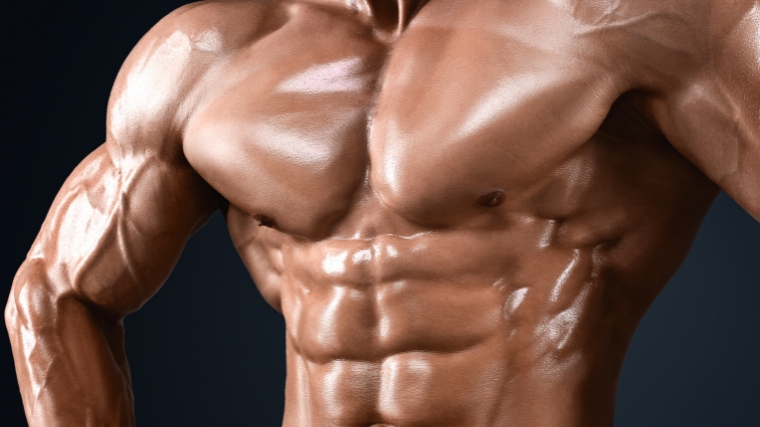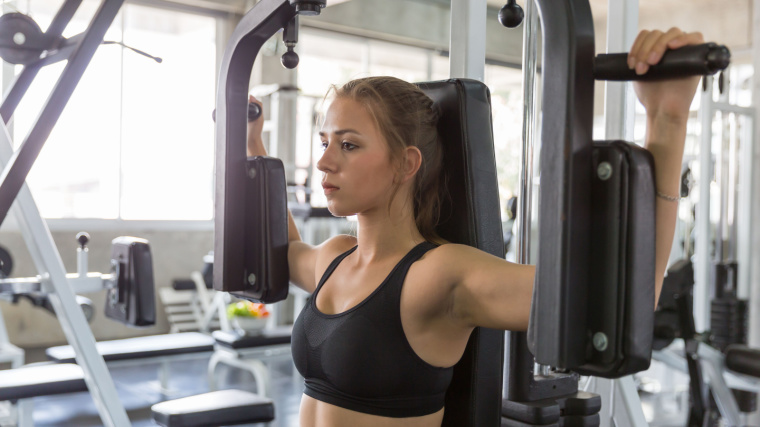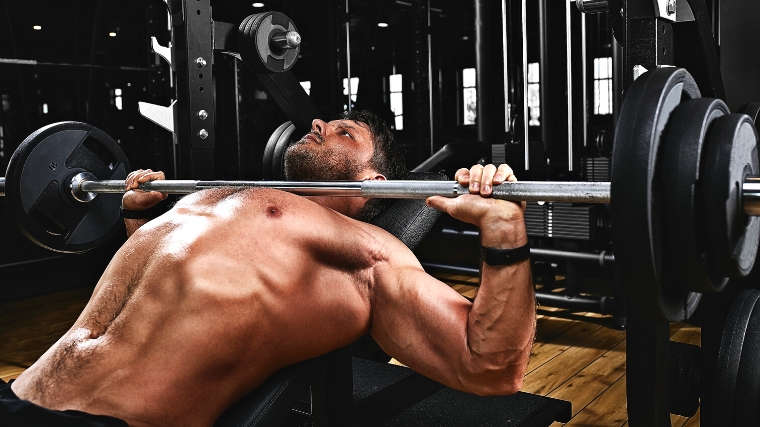Bodybuilding is an art form. Where the sculptor carves and chips detailed works of art from stone or clay, the physique enthusiast strives to bring forth every last striation in every muscle across their body.
The bodybuilder’s unwavering dedication to sculpting their physique gives rise to plenty of myth and mysticism in the sport — can you, for instance, target a specific section of a muscle for growth?

Think of the long head of the triceps, or the two individual muscles of the calf. Is the inner chest just as trainable? The short answer is that it depends. The long answer isn’t as simple as you might think, but it’s not all that complicated either. You might just learn a thing or two about optimal chest training along the way, too.
Anatomy of the Chest
The pectoral muscles sit on the front of your upper torso and span from your armpit to your midline. Your pecs have two distinct compartments; the pectoralis major, which makes up a bulk of the tissue’s overall mass, and the smaller, deeper pec minor.
The pec major connects from your upper ribs to your upper arm, or humerus, bone. Notably, the pec minor attaches on the shoulder blade as well. Although the two heads of the pectoral muscle are clinically distinct, many clinicians regard them as the same tissue when conducting studies on muscle activation. (1)
The fibers of the pec run mostly horizontal, though the exact shape and orientation of each muscle “belly” — the bulk of the tissue itself — will vary according to your unique genetics.
The “Inner Chest”
As a general spatial descriptor, you can certainly say you have an “inner chest.” After all, a portion of the tissue exists closer to your midline.
However, anatomically speaking, there is no distinct “inner” compartment of the pectoralis major (or minor). When people speak about their inner chest, they’re colloquially talking about the visual separation between each individual pec in the middle of their torso. Those same fibers that attach to your sternum also span all the way out to your shoulder.

So, when you hear folks in the gym say that a certain exercise blasts their inner chest, they aren’t necessarily correct — but they’re not entirely mistaken, either.
How to Train Your Inner Chest
So, what gives? If there’s no super-secret inner pec tissue, why do bodybuilders so often wax poetic about building up their inner pecs?
Well, you may want a chest that rivals Schwarzenegger in his heyday, but a full and three-dimensional pair of pecs may not have been in the cards for you, genetically speaking. However, that doesn’t mean that there’s no way to try to induce some targeted hypertrophy in your “inner chest” specifically.
Find Your Line of Pull
Muscular contraction is mostly binary; when you need to create movement at a joint, a given muscle will either contract or it won’t in order to flex or extend that joint.
However, not every individual muscle fiber in your pecs is equally suited to moving a given joint at a given angle. Certain studies on quadriceps muscle activation have shown that changing your posture can affect which areas of the quads work harder than others, even though the tissue as a whole is performing knee extension in unison. (2)
Put simply, this means that the exact angle of your arm in space when you train your chest with presses or flyes may impact which fibers are taxed more than others, even though your pec as a whole is called to action to move your arm. This is a bit of an extrapolation from existing data, but the logic is sound.

[Read More: Best Upper Chest Exercises for Building Muscle]
This phenomenon has been documented in the literature as well, with some studies showing a marked distinction between pec activation depending on the angle of the arm when performing an exercise like the bench press. (3)
So, consider experimenting with different angles when you perform presses or flyes. This may help you “find” a solid inner chest contraction, but take note that very little literature exists that analyzes muscle activation in the “inner regions’ of the pecs specifically.
Use Isolation Movements
Another way that you might be able to grow your inner chest is to ensure that more mechanical tension is placed upon the pec fibers themselves. For instance, during pressing movements, a portion of the load is placed upon supportive muscles like your shoulders and triceps.
As your pecs tire out, these muscles help to “pick up the slack” and keep the weight moving. However, this could also mean that you aren’t reaching all the fibers closest to your inner chest.
You may find success by including some additional flye or crossover exercises. These moves rely solely on your pecs and also place the tissue under a significant stretch as well.
Work With Cables
Cables aren’t by any means the endgame of resistance training, but they can be extremely useful in the right contexts. Comprehensive chest development and cable training go hand-in-hand.
For example, when you perform a flye with dumbbells, the range of motion ends when your arm is perpendicular to the floor. Not only is there little to no tension on the fibers of your pecs here, but they can actually draw your arm further across your torso if you were to continue crossing your arms.
So, performing standing cable flyes — particularly one arm at a time — can be devilishly effective for engaging parts of your chest you may not normally feel due to the extended range of motion. Continue to draw your arm across your body, squeezing your upper arm into your torso, and you might find that your inner chest lights up hard.
Inner Chest Workout for Bodybuilding
Before you dive in, take heed; there’s no such thing as a magical “inner chest workout” that will alter the shape or orientation of your pectoral muscles. The appearance of your physique comes down, in large part, to genetics, so you have to work with the hand you’re dealt and take things in stride.
However, that doesn’t mean all hope is lost. A few clever exercise selections (along with healthy and tempered expectations) can help you cover your bases in the weight room and ensure that you’re building the best pair of pecs possible.
The Workout
The key to comprehensive chest development involves mixing up your equipment of choice, rep ranges, exercise selection, and angles of attack.
This workout is designed to torch your chest altogether, but it also includes some exercises that may help bring up your inner chest specifically.
- Dumbbell Bench Press: 3 x 6
- Incline Dumbbell Flye: 2 x 8
- Single-Arm Cross-Body Cable Flye: 2 x 12
- Deficit Push-Up: 2 sets to failure
Find Your Inner Chest
As a bodybuilder, you are both the marble and the sculptor. To develop the physique of your dreams — no matter what it looks like — you have to sift through mountains of potential misinformation. Finding the right information is one thing, but determining its merit is another matter altogether.
Were the gym bros right after all about the inner chest? Sort of. The shape of your pecs was decided long before you ever picked up a barbell, but there’s some credibility behind the idea that the right exercises, at the right angle, and with enough intensity, can carve out an inner chest to be proud of. At the end of the day, it’s your duty to get to work in the weight room and see what you can get done, so get to it.
References
1. Barnett, Chris; Kippers, Vaughan; Turner, Peter. Effects of Variations of the Bench Press Exercise on the EMG Activity of Five Shoulder Muscles. Journal of Strength and Conditioning Research 9(4):p 222-227, November 1995.
2. Stoutenberg, M., Pluchino, A. P., Ma, F., Hoctor, J. E., & Signorile, J. F. (2005). The impact of foot position on electromyographical activity of the superficial quadriceps muscles during leg extension. Journal of strength and conditioning research, 19(4), 931–938.
3. Glass, Stephen C.; Armstrong, Ty. Electromyographical Activity of the Pectoralis Muscle During Incline and Decline Bench Presses. Journal of Strength and Conditioning Research 11(3):p 163-167, August 1997.
Featured Image: Sergey Chips / Shutterstock